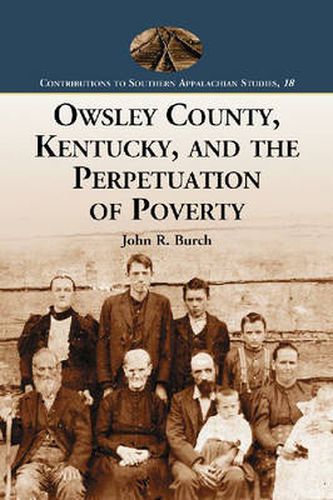Readings Newsletter
Become a Readings Member to make your shopping experience even easier.
Sign in or sign up for free!
You’re not far away from qualifying for FREE standard shipping within Australia
You’ve qualified for FREE standard shipping within Australia
The cart is loading…






This title is printed to order. This book may have been self-published. If so, we cannot guarantee the quality of the content. In the main most books will have gone through the editing process however some may not. We therefore suggest that you be aware of this before ordering this book. If in doubt check either the author or publisher’s details as we are unable to accept any returns unless they are faulty. Please contact us if you have any questions.
This scholarly study identifies several reasons behind Owsley County’s ongoing struggle with poverty, including the county’s lack of natural resources, a poor transportation system, and a centralized socio-political power structure controlled by the entrenched elite. Finally, the author asserts that Owsley County’s economic hardships are far from unique, but rather are representative of a significant number of similarly-stricken Appalachian counties and towns. Several tables and appendices provide useful demographic, legislative, and agricultural data from Owsley County between 1844 and 1975.
$9.00 standard shipping within Australia
FREE standard shipping within Australia for orders over $100.00
Express & International shipping calculated at checkout
This title is printed to order. This book may have been self-published. If so, we cannot guarantee the quality of the content. In the main most books will have gone through the editing process however some may not. We therefore suggest that you be aware of this before ordering this book. If in doubt check either the author or publisher’s details as we are unable to accept any returns unless they are faulty. Please contact us if you have any questions.
This scholarly study identifies several reasons behind Owsley County’s ongoing struggle with poverty, including the county’s lack of natural resources, a poor transportation system, and a centralized socio-political power structure controlled by the entrenched elite. Finally, the author asserts that Owsley County’s economic hardships are far from unique, but rather are representative of a significant number of similarly-stricken Appalachian counties and towns. Several tables and appendices provide useful demographic, legislative, and agricultural data from Owsley County between 1844 and 1975.